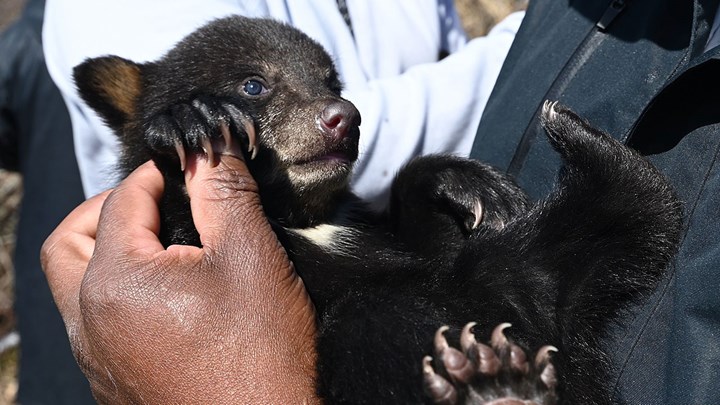
by Jim Curcuruto, Executive Director, Outdoor Stewards of Conservation Foundation - Thursday, April 13, 2023

You may have recently seen a post on Facebook, Instagram, LinkedIn or other social media platforms from someone with a huge smile on his or her face snuggling with a tiny bear cub. Each post has tons of comments on the cute cub and questions on how someone got so lucky to hold one.
The story is not about the bear cub. Here is the real scoop.
It is about how that bear cub got to be in the first place, the folks that do the majority of on-the-ground conservation and habitat work, and the funding mechanism that supports not only bears but all fish and wildlife from deer, rabbits, elk and eagles to songbirds, butterflies, bass and trout.
The story of conservation funding is sadly undertold. The Wildlife and Sport Fish Restoration Program (WSFR) is the primary funding source for conservation. As this NRA Hunters’ Leadership Forum website regularly shares, WSFR combines manufacturer excise taxes on firearms, ammunition, archery, angling equipment and boat fuel with hunting and fishing license sales. This funding mechanism has been around since the 1930s and, to date, has brought in more than $71 billion in funding. These funds are distributed to state fish and wildlife agencies and account for up to 75 percent of their annual budgets.
These agencies conduct the bulk of the on-the-ground conservation work in America. The dedicated staff maintains and improves fish and wildlife populations; manages habitats for ideal conditions; conducts hunter, angler and boater education; builds shooting ranges; and are the all-around caretakers of our flora and fauna. It is safe to say that without WSFR funds supporting these agencies, our woods and waters would be in complete disrepair.
America’s 60-plus million active HATS (Hunters, Anglers and Target Shooters) are the primary funders of conservation and the WSFR program. HATS provided more than $3.6 billion to conservation in 2022—that’s $10 million daily. No other group comes close to supporting conservation efforts, so make sure you take your hats off to HATS!
Since the story above is not common knowledge, cue the cute cub.
A program called Partner with a Payer was started by USFWS Branch Manager Tom Decker and myself to better inform the outdoor industry on the cycle of conservation. Here is what the process entails:
To tell this story, we conducted factory tours and field days (including black bear den studies) to show industry folks firsthand how the conservation cycle works.
There is still a need to inform HATS and the general population about how conservation is funded. The next time you see someone holding a bear cub, spread the word about WSFR, HATS and how land, fish and wildlife conservation is truly funded and managed in America.
Please share this article or this video to show others how conservation is truly funded.
About the Outdoor Stewards of Conservation Foundation (OSCF)
The OSCF is a 501(c)(3) nonprofit organization with a mission to use research-based communications and engagement programs to help recruit the next generation of hunters, anglers and target shooters and to promote the fact they are primary funders and stewards of conservation in America. To learn more about OSCF programs, visit www.OutdoorStewards.org or contact Jim Curcuruto at (203) 450-7202; [email protected].
E-mail your comments/questions about this site to:
[email protected]
Proudly supported by The NRA Foundation and Friends of NRA fundraising.
